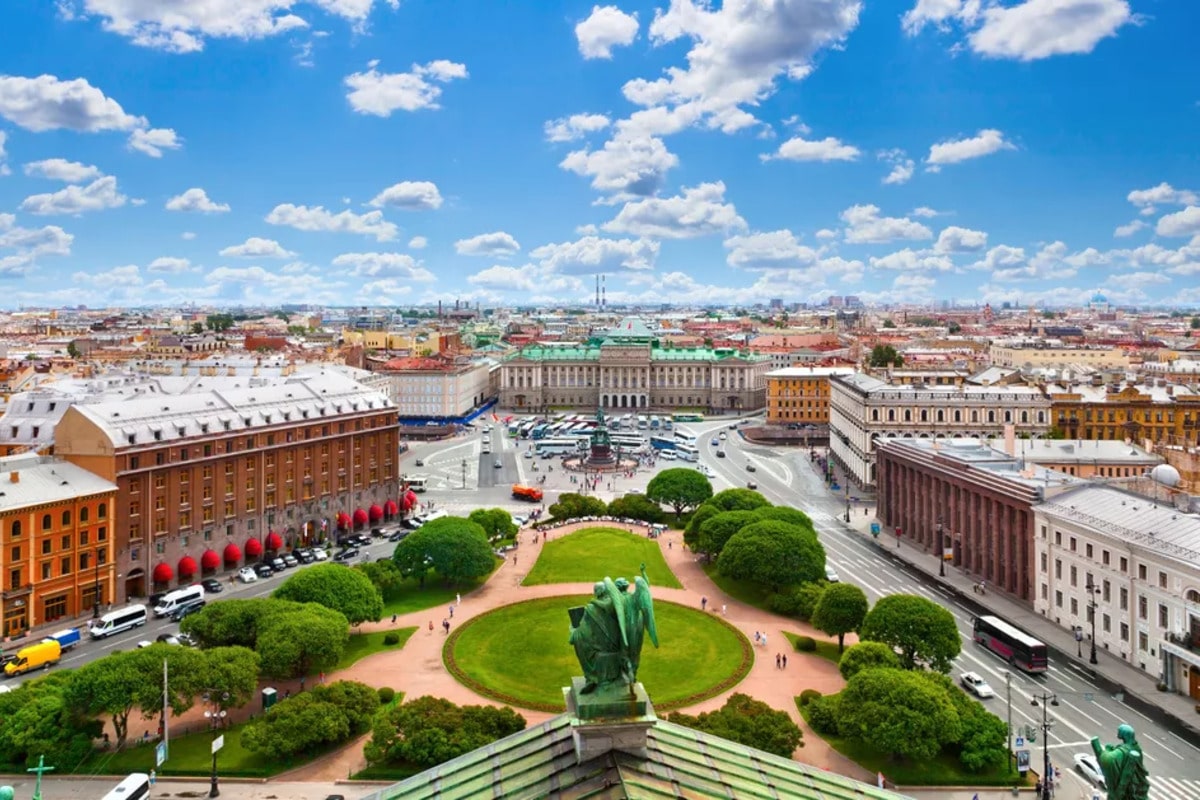Saint Petersburg is a city that amazes with its architecture, history, and unique location. Originally built on swampy land, it eventually became a cultural capital often referred to as the Venice of the North. Its canals, palaces, bridges, and museums preserve the legacy of imperial grandeur, revolutionary events, and artistic achievements. These interesting facts about Saint Petersburg will help you understand why this city holds such a special place in world culture and history. Here you will discover incredible facts you may not have known before.
- Saint Petersburg was founded in 1703 by order of Peter the Great on land recently reclaimed from Sweden. It is one of the few major European cities with a precisely known founding date. The construction began with the Peter and Paul Fortress, built on an island in the Neva River delta. Peter envisioned the city as a window to Europe and wanted it to rival Western capitals.
- The city is located on more than 40 islands intersected by about 90 rivers, canals, and straits. This is one of the reasons why Saint Petersburg is often called the Venice of the North. It has over 300 bridges, each with its own history and architectural style. Many of them are drawbridges that create spectacular sights at night.
- Every summer, the city experiences a natural phenomenon known as the White Nights. The sun barely dips below the horizon, and even at midnight the city remains bathed in soft light. This phenomenon attracts many tourists who walk along the embankments and watch the opening of the bridges. During this time, numerous festivals and cultural events take place.
- The Hermitage Museum in Saint Petersburg is one of the largest and oldest museums in the world. Its collection includes over three million items, and viewing each for just one minute would take more than ten years. The museum occupies several buildings, including the Winter Palace, which once served as the residence of Russian emperors. Among its many unique rooms are the Malachite Room and the St. George Hall.
- During World War II, Saint Petersburg, then known as Leningrad, endured a blockade that lasted 872 days. This was one of the longest and most devastating sieges in human history. Despite hunger, cold, and bombings, the city did not surrender, and its people showed incredible resilience. Today, the Piskaryovskoye Memorial Cemetery honors the victims, where more than half a million are buried.
- Nevsky Prospect is the main avenue of the city, stretching for over four kilometers. It is home to historic buildings, theaters, shops, and churches, including the Kazan Cathedral. Nevsky Prospect has always been the heart of city life and is considered the most elegant street in Saint Petersburg. Walking along it feels like a journey through time.
- The Alexander Column on Palace Square stands solely under its own weight without any fastenings. It was erected in 1834 to commemorate the victory over Napoleon. The column, including the angel figure on top, is over 47 meters high and weighs around 600 tons. Even today, engineers marvel at the precision and stability of its construction.
- Saint Isaac’s Cathedral is one of the largest domed churches in the world. It took nearly 40 years to build and can accommodate over 10,000 people. The dome is covered with more than 100 kilograms of gold, and the interior features massive columns of malachite and lapis lazuli. Today, it functions both as a museum and as an active place of worship on special occasions.
- The city boasts the world’s longest granite embankment ensemble, stretching over 20 kilometers along the Neva River. The granite used in its construction was brought from Karelia and Finland. This embankment is one of the city’s iconic landmarks and frequently appears on postcards and paintings. It has withstood floods, frost, and the passage of time.
- Saint Petersburg served as the capital of the Russian Empire from 1712 until 1918. It was the site of major political events, including the February and October revolutions. After the revolution, the capital was moved to Moscow, but Saint Petersburg remained a cultural and artistic hub. It was home to famous writers such as Pushkin, Dostoevsky, Gogol, and Akhmatova.
- The city changed its name several times — from Saint Petersburg to Petrograd, then to Leningrad, and finally back to Saint Petersburg. These changes reflected the political and ideological transformations of the country. Each name left a distinct mark on the city’s history and identity. Today’s Saint Petersburg combines features from all its historical periods.
- The Saint Petersburg metro system is one of the deepest in the world. The Admiralteyskaya station is located more than 86 meters underground. Many stations are decorated like palaces, with marble, chandeliers, and mosaics. It is not just a means of transport but also an architectural attraction.
- The city has more than 2,000 libraries, making it one of the most intellectually rich cities in Russia. Among them is the National Library of Russia, the second largest in the country. It holds over 38 million items, including rare manuscripts and historical documents. It is a place of knowledge, study, and cultural heritage.
- The Bronze Horseman, a monument to Peter the Great, is one of the city’s most recognized symbols. The statue was created by French sculptor Étienne Maurice Falconet, and the massive granite base took several years to transport and install. The monument has survived wars, floods, and revolutions, remaining in place throughout. It represents the determination, strength, and vision of the city’s founder.
Saint Petersburg is a city with deep historical roots and a remarkable cultural legacy. These fascinating facts about Saint Petersburg reveal how multifaceted and extraordinary this city truly is. Here, imperial grandeur, heroism, art, and modern life intertwine seamlessly. Exploring Saint Petersburg is an endless journey, always offering something new to discover.





